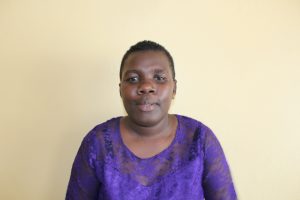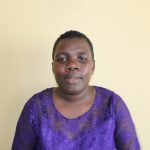Gambaragai ADC Primary School does not have its own water source. The 231 students attending the school must try to find and collect enough water to meet everyone's water needs daily, including the 13 teachers. It is a responsibility that steals from them in many ways.
"As a school, we have suffered a lot on water issues. Our students [drink] the stream water direct without treating [it], which has affected our school performance both academically and [in] school attendance," said 39-year-old teacher Emmanuel Nalobile, shown below, accompanying students to collect water.
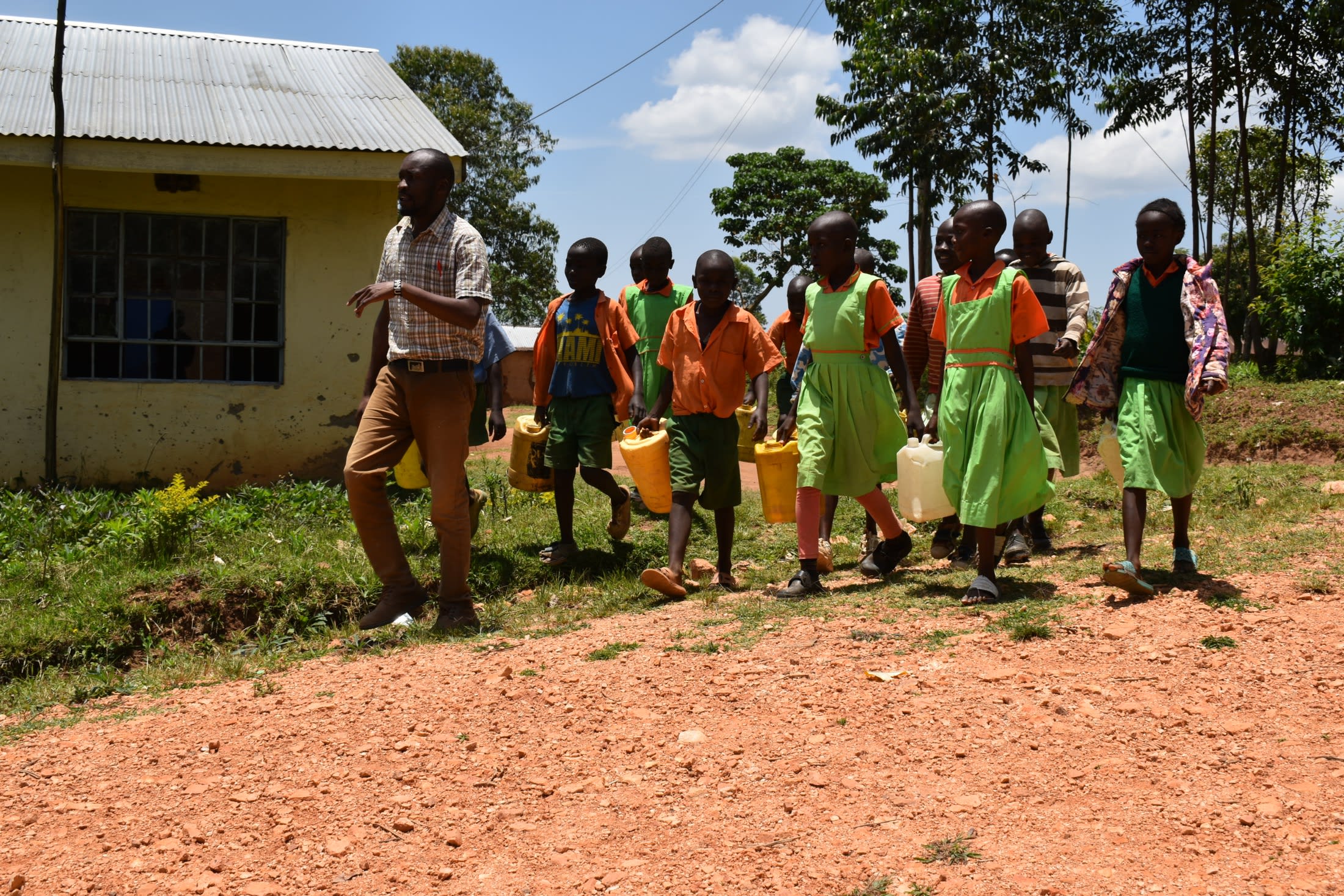
Students bring water from home every morning, but that water quickly runs out. When it does, students are sent off campus to a local stream to collect more.
Three times a day (each morning, after lunch, and every afternoon), students leave their school when they should be learning and playing to collect water. Spending so much time off the school campus searching for water leaves students with little time for studies, and understandably, that leads to poor academic performances.
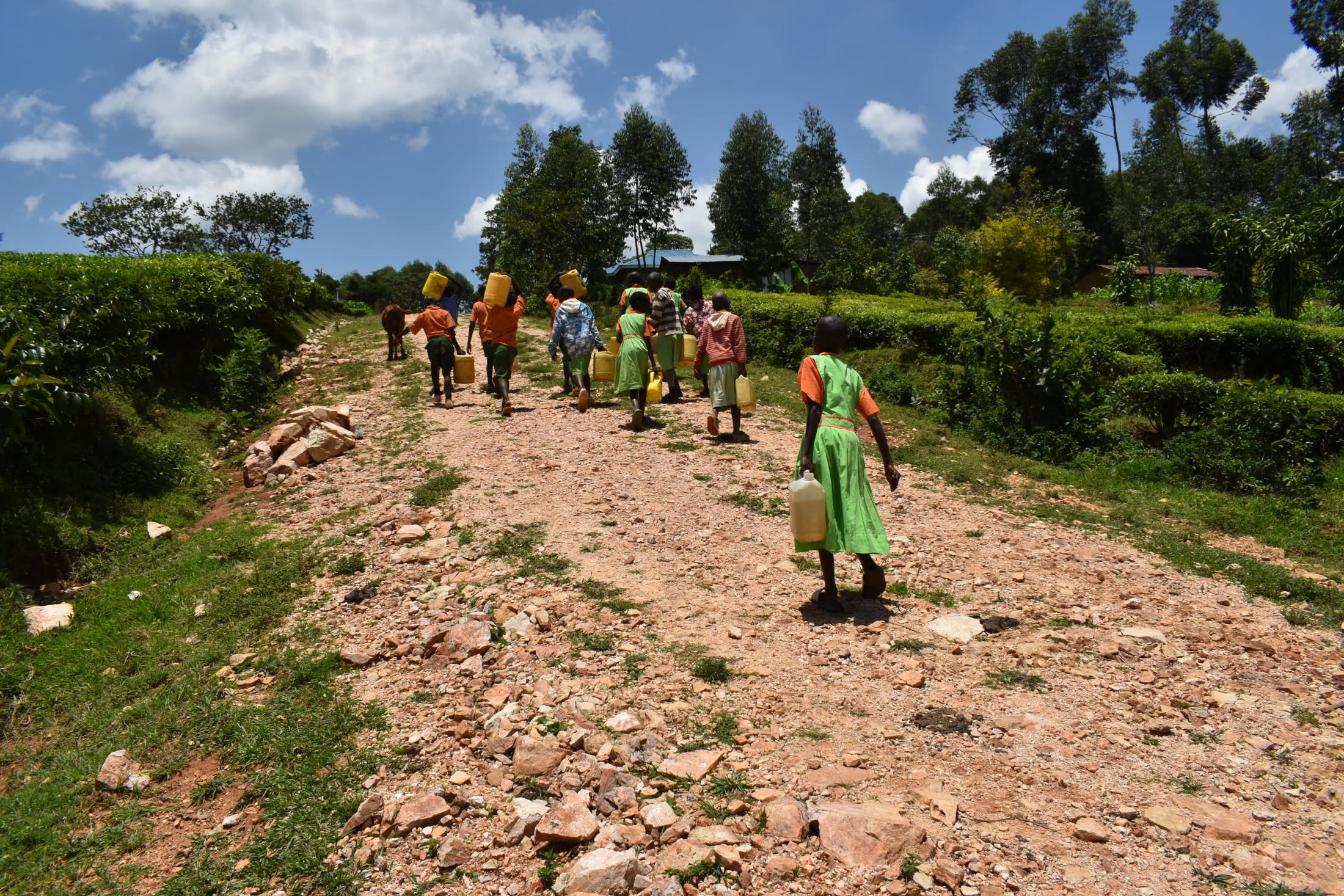
And the trip is not easy, especially for young children.
The road is rocky and uneven, and they must pay special attention as they cross a rickety wooden bridge. Once they reach the stream, they climb down an embankment, kneel beside it and submerge their container to collect murky, dirty water.
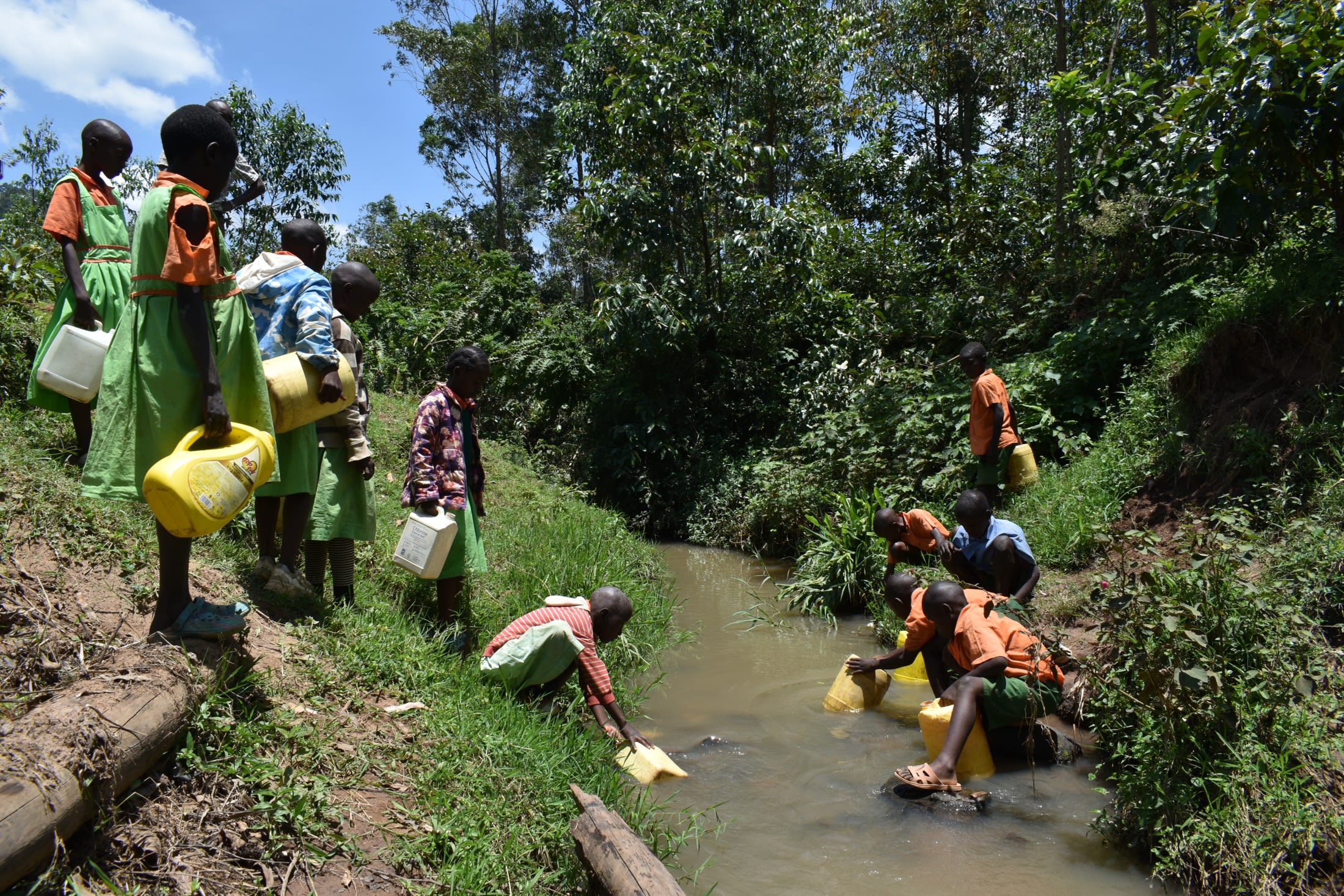
After filling their containers, they work hard to carry the heavy, full jugs back up the incline, over the bridge again, and back up the road back to the school.
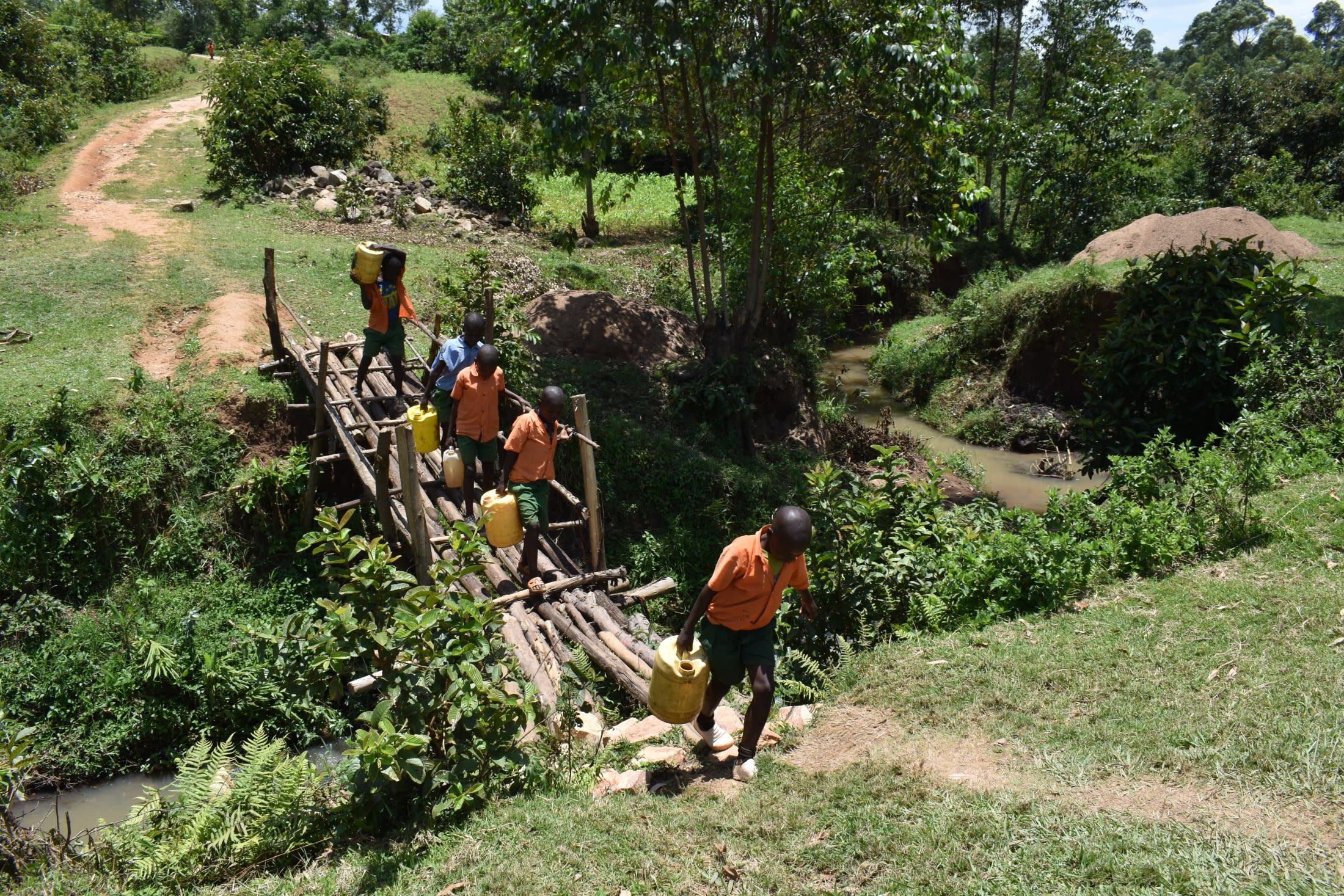
Sadly, after all their effort, the water collected makes them sick with water-related illnesses, such as diarrhea and typhoid.
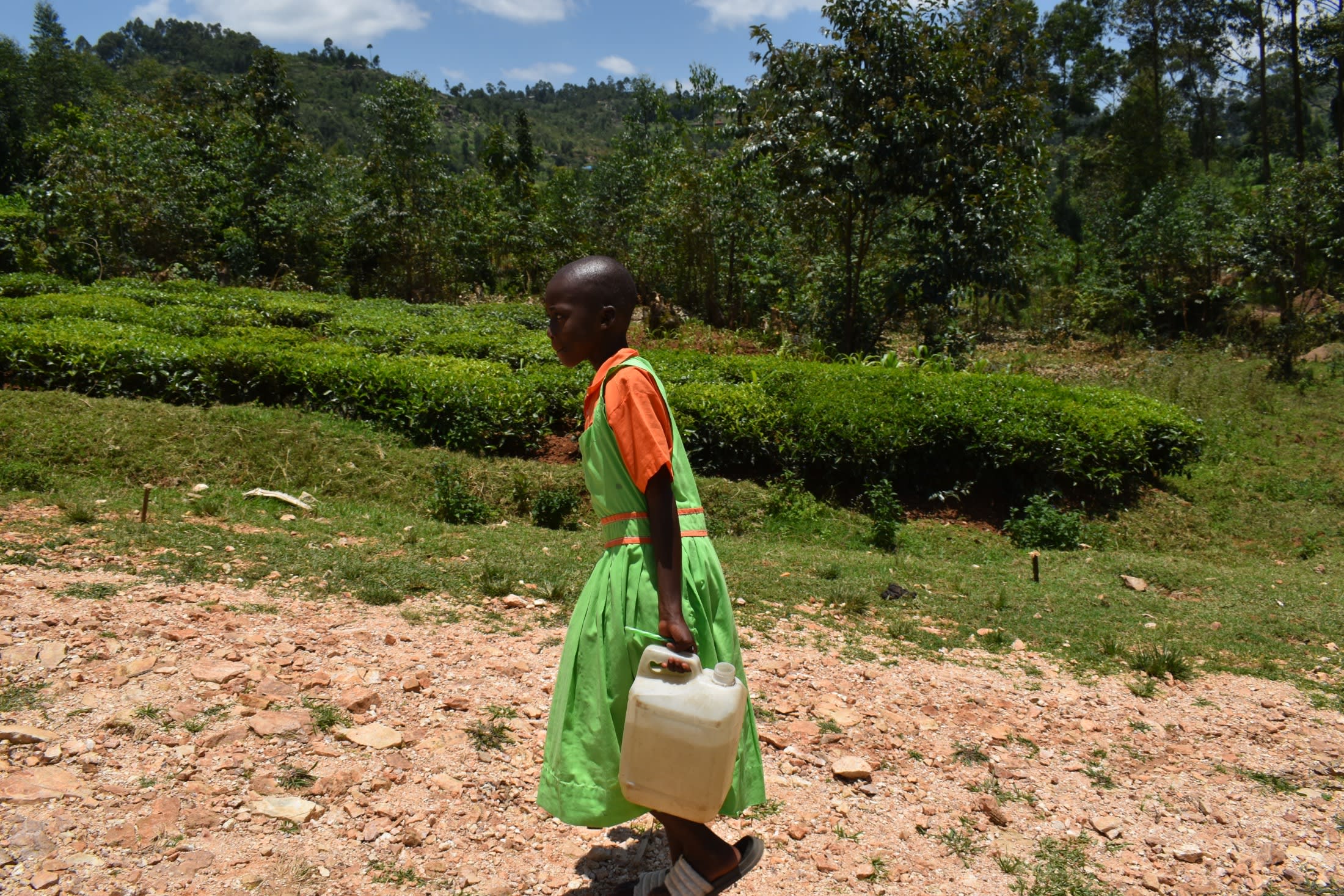
"Since I joined this school, there is no single day our class attendance has been almost 100%. Just last term, towards the end, five students of our class were diagnosed with typhoid after consuming the water. Their absence affected the whole class, which led to poor performance," said 10-year-old student Marion Z., shown above carrying water.
“Universal access to safe drinking water is a fundamental need and human right. Securing access for all would go a long way in reducing illness and death, especially among children.” - UNICEF
"When I visited the stream, I was short of words. The water was too dirty, and to my surprise, I got [to see] some students taking (drinking) the water [directly] from the stream. The source is not recommended for consumption, and I would not dare drink that water," our field officer Stella Inganji said.
The school needs a reliable water source on its campus, so students can reserve their time and energy for learning and not suffer from repeated illnesses that steal from their futures.
"If assisted with our own source, [I] am sure it will change a lot of things," concluded Mr. Nalobile.
Water at schools is unique, which is why we need unique solutions.
The Proposed Solution, Determined Together...
At The Water Project, everyone has a part in conversations and solutions. We operate in transparency, believing it benefits everyone. We expect reliability from one another as well as our water solutions. Everyone involved makes this possible through hard work and dedication.
In a joint discovery process, community members determine their most advantageous water solution alongside our technical experts. Read more specifics about this solution on the What We're Building tab of this project page. Then, community members lend their support by collecting needed construction materials (sometimes for months ahead of time!), providing labor alongside our artisans, sheltering and feeding the builders, and supplying additional resources.
Water Access for Everyone
This water project is one piece in a large puzzle. In Kenya, Sierra Leone, and Uganda, we're working toward complete coverage of reliable, maintained water sources that guarantee public access now and in the future within a 30-minute round trip for each community, household, school, and health center. One day, we hope to report that this has been achieved!
Training on Health, Hygiene & More
With the community's input, we've identified topics where training will increase positive health outcomes at personal, household, and community levels. We'll coordinate with them to find the best training date. Some examples of what we train communities on are:
- Improved hygiene, health, and sanitation habits
- Safe water handling, storage & treatment
- Disease prevention and proper handwashing
- Income-generation
- Community leadership, governance, & election of a water committee
- Operation and maintenance of the water point
Handwashing Stations
Alongside each water source, we also provide two new gravity-fed handwashing stations that will allow everyone at the school to wash their hands without running water. Handwashing is so important to help prevent future water-related illnesses in the school community.
The student health club will maintain the stations, fill them with water, and supply them with soap (which we will teach the school community how to make during the training!).
VIP Latrines
In addition, we will construct two triple-door Ventilated Improved Pit (VIP) latrine blocks designed to prevent fecal disease transmission. Each latrine will have a cement floor, which is easy to use and clean regularly. Three doors will serve the girls, and three doors will serve the boys.






 Borehole Well and Hand Pump
Borehole Well and Hand Pump
 Rehabilitation Project
Rehabilitation Project












